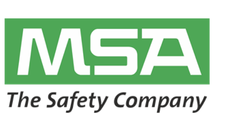Prevent dangerous working conditions with effective H2 detection
| Prevent dangerous working conditions with effective H2 detection | 16.64 KB | Download | |
| Interchangeable smart sensors in the Ultima X, eliminate the need for reconfiguration | 2.39 MB | Download | |
| MSA Africa fixed gas and flame detection product manager Robbie Taitz | 572.35 KB | Download | |
| The batteries in the data center are continuously being charged to ensure maximum efficiency | 89.04 KB | Download |
Due to its light form, H2 molecules rise quickly in a room, and its vapours are colourless, odourless, tasteless and highly-flammable. Failure to detect the gas can result in an explosion or fire, while exposure can lead to suffocation and respiratory ailments. H2 leakages can have cost implications, as long-term exposure can damage equipment too.
Metals and plastics will lose ductility and strength, leading to the formation of cracks, and can eventually cause ruptures. Fire and gas detection experts from across the globe all agree on an international concept that focuses on ‘layers’ of protection to reduce the spread of hazardous gas leaks. These layers include a combination of gas leak monitors and fire detectors.
MSA Africa Fixed Gas and Flame detection product manager Robbie Taitz explains that it is important to make sure that gas detection is available and that it is effective enough to maintain safety. “Combustible gas detection placed in potential H2 collection areas can provide gas concentration information, enabling the user to take corrective action before an explosive condition occurs.”
The USA-based National Fire Protection Association (NFPA) requires that a sensor with an explosion-proof rating be installed in classified areas, where the volume of space that exists from the ceiling is 18-inches (46 cm) or below. The sensor should be connected to a transmitter or controller which is either explosion-proof, or is installed in a nearby non-classified, general-purpose area.
The transmitter or controller can be configured to send a signal to a building automation system, or can be used as a stand-alone system. The transmitter or controller are guaranteed to communicate the gas concentration to the end-user’s internal network for notification purposes.
Taitz asserts that new facilities that use H2 should be designed with adequate gas protection measures, while older facilities should be revisited to ensure that hazards are minimised. “Safety systems with gas detection technologies are vital to counter the possibilities of property damage, personal injury and loss of life.”
MSA Africa offers a complete range of gas detection solutions with sensing technologies to suit different measuring ranges. The products are able to provide indications ranging from extremely small concentrations (1 ppm) that can be swiftly investigated and remedied, right through to highly-dangerous concentrations (1 000 ppm) that are monitored by a catalytic bead sensor.
MSA Africa‘s Ultima X gas monitor includes a multi-sensor configuration that allows for the use of dual sensing technologies to provide layers of protection. A patented sensor disconnect-under-power feature also allows sensors to be replaced in hazardous areas without area declassification, while interchangeable smart sensors eliminate the need for reconfiguration.
The MSA TRIGARD gas monitoring system has a mounting option and uses push-of-a-button calibration. It boasts a variety of features including; a sturdy NEMA 4X design, multiple sensor mounting option, and a single circuit board to increase reliability.
What’s more, the MSA GasGard XL is housed in a durable, fire-retardant ABS plastic, and is able to monitor up to eight remote gas sensors with the highly-accurate wall-mounted GasGard XL controller. Other features include a large, multi-language LCD display for real-time readings and full-system diagnosis, a sensor buzzer that sounds up to 85 dB, and a convenient upload system that enables event-log transfer via Ethernet or USB.
Ends
Notes to the editor
To download hi-res images for this release, please visit http://media.ngage.co.za and click the MSA Africa link to view the company’s press office.
About MSA
MSA been the world's leading manufacturer of high-quality safety products since 1914. MSA products may be simple to use and maintain, but they’re also highly-sophisticated devices and protective gear - the result of countless R&D hours, relentless testing, and an unwavering commitment to quality that saves lives and protects thousands of men and women each and every day. Many of MSA's most popular products integrate multiple combinations of electronics, mechanical systems, and advanced materials to ensure that users around the world remain protected in even the most hazardous of situations. MSA's dedication to safety has been the key to its impressive year-over-year growth. In eight of the past ten years, MSA has achieved record growth numbers, with annual revenues of more than US$1 billion.
MSA Africa Contact Details
Robbie Taitz
Product Manager for Fixed Gas and Flame detection
Tel: (+27) 11 610 2637
Cell: (+27) 79 699 0434
Email: robbie [dot] taitz [at] msasafety [dot] com (robbie [dot] taitz [at] msasafety [dot] com)
Web: www.MSAsafety.com
Media Contact
Ashleigh Wilson
NGAGE Public Relations
Phone: (011) 867 7763
Fax: 086 512 3352
Cell: 072 626 7401
Email: ashleigh [at] ngage [dot] co [dot] za (ashleigh [at] ngage [dot] co [dot] za)
Web: www.ngage.co.za
Browse the NGAGE Media Zone for more client press releases and photographs at http://media.ngage.co.za

